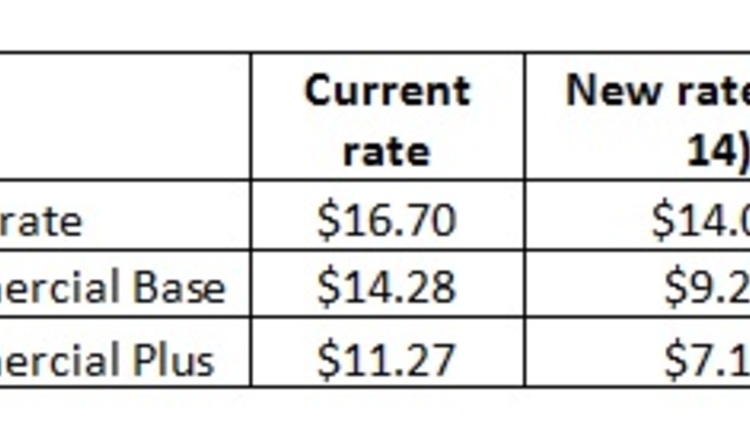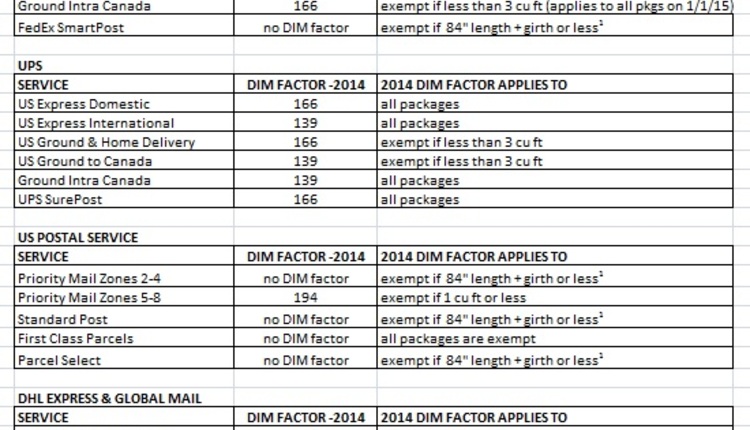We all know that postal rates went up as of June 30, 2002. But more important to our industry is the big change in Priority Mail, which could affect both how you ship Priority Mail parcels and the cost to ship those packages.
First, the flat (unzoned) rates from two to five pounds, which represents most of the current Priority Mail shipments, will become a thing of the past. You will now need to calculate the zone to determine the cost of these shipments, which could mean additional time in processing shipments.
Second, depending on the weights and zones to which you ship, you may be about to be hit with one of the biggest rate increases since the inception of Priority Mail in 1968. In fact, some weight-zone cells are going up more than 60%! Why are these rates going up so dramatically? Postal Service officials hope these new rates may be enough to stabilize Postal Service finances so that the next rate increase may be put off for some time.
But there is some good news as well. The Priority Mail flat-rate envelope is actually going down 10 to $3.85. And if you're lucky enough to be using Priority Mail for low zones, your overall rates may actually go down under this increase. Despite the overall higher rates, many users may find that Priority Mail still represents the best overall value for their shipping dollars.
In light of these major changes, Jim Cochrane, manager of Package Services for the Postal Service, says, Our competition has already moved to zone-based pricing, and because of our flat rates, we were losing significant volume in zones 4 and under. Our new zone-based rates will help us keep pace with the market. We feel that Priority Mail continues to offer a significant price advantage over the competition, particularly in the lower zones. And overall, Priority Mail offers a tremendous value in comparison with other available two- and three-day air products. In addition, we believe our customers will take a close look at Parcel Select as a lower cost alternative, particularly if they can live with a slight increase in delivery times. Despite the rate increase, we still see tremendous value in Priority, and we are looking toward some real growth in the close-in zones while maintaining our significant price advantage in the higher zones versus the commercially available air products.
If you are one of the legions of Priority Mail users, now is the time to take a close look at the impact this increase will have on your operations and evaluate your options.
First, take a look at the numbers. Although the rate increase affects all weights and zones up to the 70-pound maximum weight, this article will concentrate on one- to five-pound packages to residential customers since this has historically been the market niche for Priority Mail.
Table 1 graphically illustrates the dramatic increases in the higher zones, although some of the lower zones are actually going down a few cents. As mentioned, the two- to five-pound rates, which have been unzoned since 1991, will now be zoned.
Again, a bright spot is the flat-rate envelope. This envelope currently pays the two-pound rate of $3.95 regardless of the actual weight of the shipment. The new rate will be $3.85, which makes it an even better value. The flat-rate envelope can hold four pounds or more of documents or merchandise. Not a bad deal considering the commercial carriers could charge up to $13.60 for this same shipment with three-day air! Keep in mind that you must use the special flat-rate envelope to get this rate. It is assumed that the Postal Service will print new flat-rate envelopes since the current envelope is printed with the two-pound rate.
Before you can consider the options available to you, you'll need to know how the rate increases will impact your particular operation. The most accurate way to do this is to download package level detail (PLD) information for your shipping system and re-rate those shipments using both the current and new Priority Mail rates. Unless you have a considerable amount of seasonal variation in your shipping patterns, a month's worth of PLD should suffice. If you're lucky, you will have a lot of low zone shipments, and there may be little or no impact. However, if your zones are higher, you may see overall increases of 30% or more.
UPS 3 Day Select and FedEx Express Saver
Let's take a look at how the new Priority rates stack up against the commercial carriers' least expensive air services, which are FedEx Express Saver and UPS 3 Day Select. (Airborne does not offer a three-day air service). FedEx and UPS have a three-day delivery guarantee on these shipments to both com-mercial and residential addresses. Table 2 compares the new Priority rates to these services. As you can see, you would need a very hefty discount from UPS or FedEx to even get close. Table 3 compares the various features and add-on charges between Priority Mail, UPS and FedEx.
Commercial Ground Services
FedEx, UPS and Airborne all offer ground delivery services, which might be a viable option for packages that weigh four pounds or more, although delivery may take a few days longer. However, your lighter-weight Priority packages will continue to enjoy a considerable price advantage. For instance, a two-pound, zone 6 Priority shipment is $5.05, while UPS Ground and FedEx Home Delivery will charge $5.38 for the same shipment to a residential address. Airborne Ground Delivery Service will charge $5.53 for this shipment. Also, keep in mind that your final cost with the commercial carriers may include a number of add-on charges such as fuel, Delivery Area and other surcharges.
Parcel Select
Parcel Select uses the Postal Service for the last mile of delivery, and this may be an excellent option, particularly if you (and your customers!) can live with the extra delivery days that are involved. While most Priority Mail rates went up on June 30, some of the light-weight Parcel Select rates actually went down, which is great news for the many shippers who use this service. For instance, the destination delivery unit (DDU) rate for a one-pound shipment went down five cents to $1.23. There are several ways to access Parcel Select. If you're a high-volume shipper, you can do your own drop ships, either at a DDU, sectional center facility (SCF) or bulk mail center (BMC). Most medium- to large-volume shippers choose one of the regional or national consolidators, which will transport the parcels to the drop-ship sites, usually by truck. Some services transport the parcels to the DDUs by air (such as the three-year-old Airborne@Home program), albeit at slightly higher rates than the consolidators using ground transportation. Airborne advertises its program as having two to four business day delivery, although usually well over 90% of the packages are delivered by the end of the third day.
By carefully analyzing your current Priority Mail shipments and comparing them with the new rates, you can accurately assess how these changes will affect your bottom line. A complete set of the current and new rates can be downloaded from the Postal Service's Web site at www.usps.com.
Doug Caldwell is a senior pricing analyst and Doug Kahl is regional director for AFMS Transportation Management Group. Both are frequent speakers at the Postal Forum, Mailcom, NCOF and other professional gatherings. For more information, call 800-246-3521 or visit www.afms.com.








